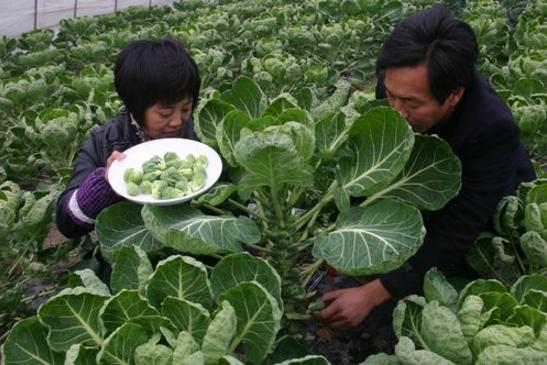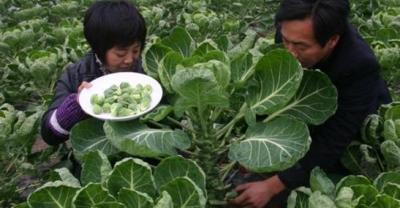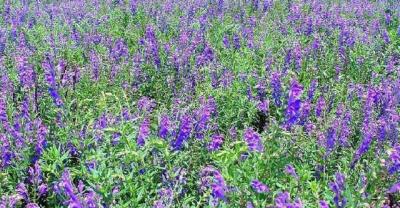Planting time and cultivation methods of Brussels sprouts
The planting time of Brussels sprouts varies according to different production regions. The suitable sowing time for open-field cultivation in the Yangtze River Delta plain is from late June to mid-July and from November to March of the following year. In the alpine area, the seeds should be sowed in April and supplied from September to October to February to March of the following year. Spring sowing should be raised in protected areas from January to February, planted from March to April, and supplied from May to June. Let's take a look at the planting technology of Brussels sprouts in detail.

Breeding of Brassica oleracea L.
The cultivation of strong seedlings is the key to the cultivation of cabbage. As most of the seeds are the first generation of hybrids and the price is expensive, sowing in summer and autumn should be planted in rain-proof shed and under the sunshade net, so as to increase the seedling emergence rate, help to cultivate strong seedlings and reduce the seed cost. If the seeds are exposed in the nursery bed, the plots with good ventilation and convenient drainage and irrigation should be selected, the seed amount per mu should be 25 grams, the sowing bed area should be 4 square meters, the soil should be covered shallowly after sowing, the black shading net should be directly covered on the bed surface, then poured water thoroughly, and the moisture should be kept moist. When the seeds begin to emerge, the sunshade net should be removed in time. In order to cool down the temperature and prevent rainstorm, a low flat shed should be built above the border to continue to cover the sunshade net. During the period from seedling emergence to planting, fake planting is required. The area of the transplant bed is about 35 square meters-40 square meters, and it is planted to the field when there are 5-6 true leaves. Generally, the seedling age is 35-45 days.
Soil preparation and planting of Brassica oleracea
The field should be ploughed early, ploughed deeply, dried in the sun, applied sufficient basic fertilizer, and applied rotten pile and barnyard manure per mu.
In the field, early ploughing, deep ploughing, sun drying and adequate basic fertilizer should be applied, with 3000 kg of rotten heap and barnyard manure per mu, 15 kg of urea and 25 kg of superphosphate. Smash the land and make a high border with a width of 1.2m, with two rows of dwarf species in each row, with a plant spacing of 40 cm, planting 2000 plants per mu, and high sex species planting a row of about 1200 plants per mu.
Field Management of Brassica oleracea
The growing period of Brassica oleracea L. is long. In addition to applying sufficient basal fertilizer, topdressing is needed for 4 times. 4-5 days after planting, live plants are fertilized, and one month after planting, seedling fertilizer is applied to promote the vegetative growth of the plant, so that there are about 40 outer leaves before entering the heading stage. The third topdressing was carried out in the bud ball expansion period, and the fourth in the bud ball harvest period. Each spin liquid fertilizer is usually poured with urea liquid, each time 10 kg-15 kg urea per mu is applied in holes or ditches, combined with watering. Attention should be paid to weeding and rhizosphere soil cultivation in order to prevent the plant from swaying and affecting the formation and expansion of bud balls when it is windy and rainy. In windy areas, bamboo poles and branches are used to set up brackets. Once the lobule is produced in the middle of the stem, the lower leaf is removed, which is beneficial to ventilation and light transmission, promote the development of the leaf ball, and it is convenient to harvest the leaf bulb. at the same time, the top should be removed and the nutrient consumption should be reduced.
Harvest and utilization
Sow seeds from February to March, harvest from May to June, sow from May to June, and harvest from November to March of the following year. Each leaf axil leaf ball, the order from bottom to top gradually mature, so to harvest many times, 6-7 times to end, generally yield 1000 kg-1200 kg per mu.
There are many ways to eat lobular balls, such as stir-frying, boiling, pickling, kimchi, salad and soup, etc.
- Prev

Planting method of Tripterygium wilfordii in Guizhou area
The planting method of star oil vine in Guizhou area, star oil vine (Plukenetia volubilisLinneo), also known as South American oil vine, Inca fruit, Inca peanut, for Euphorbia.
- Next

The planting method and Propagation of Flowers-Desert Rose
Desert rose, also known as Tianbao flower, oleander family, etc., Tianbao flower is a succulent plant, also known as succulent plant. Succulent shrubs or small trees, up to 4.5 m; trunk swollen.
Related
- Fuxing push coffee new agricultural production and marketing class: lack of small-scale processing plants
- Jujube rice field leisure farm deep ploughing Yilan for five years to create a space for organic food and play
- Nongyu Farm-A trial of organic papaya for brave women with advanced technology
- Four points for attention in the prevention and control of diseases and insect pests of edible fungi
- How to add nutrient solution to Edible Fungi
- Is there any good way to control edible fungus mites?
- Open Inoculation Technology of Edible Fungi
- Is there any clever way to use fertilizer for edible fungus in winter?
- What agents are used to kill the pathogens of edible fungi in the mushroom shed?
- Rapid drying of Edible Fungi

